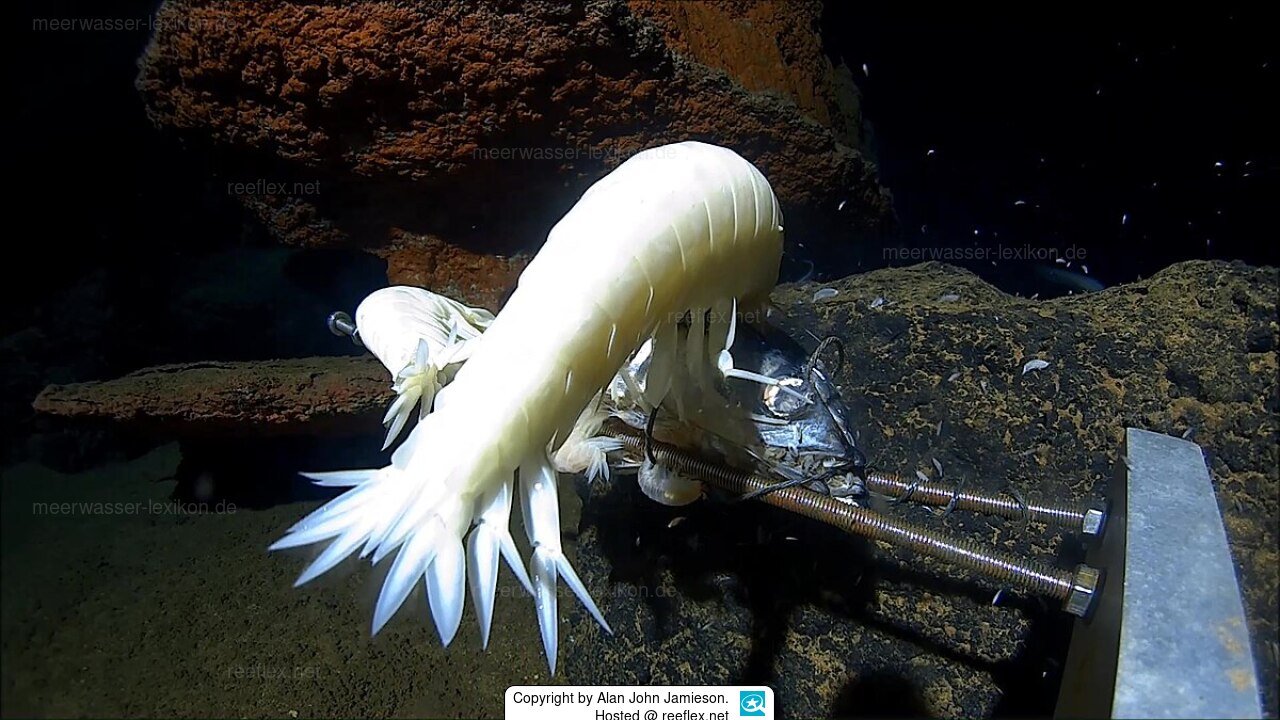Info
Alicella gigantea is a cat-sized amphipod with a completely white color.
This deep-sea creature plays a special role in the food chain as a scavenger, feeding on dead fish, mammals such as dolphins, whales, sharks, tuna, swordfish, and sea lions. Seals, sea bears, and walruses, whose carcasses sink to the bottom of the sea.
It is easy to imagine that these shrimp-like bottom dwellers bite off large chunks of the animals' bodies and swallow them. The more of these amphipods there are, the faster the carcasses are consumed.
Smaller remains are then eaten by other deep-sea creatures.
A completely swallowed black-footed albatross (Diomedea nigripes) was found in a specimen that had washed ashore (Barnard & Insram 1986).
Distribution.
Central Atlantic: Madeira Deep, Cape Verde Deep, Demerara Deep, 4850–5285 m (Chevreux I 899; this work). Central North Pacific: 1720–5865 m (Hessler et al. 1972; Ingram & Hessler 1983; Barnard & Ingram 1986).
This deep-sea creature plays a special role in the food chain as a scavenger, feeding on dead fish, mammals such as dolphins, whales, sharks, tuna, swordfish, and sea lions. Seals, sea bears, and walruses, whose carcasses sink to the bottom of the sea.
It is easy to imagine that these shrimp-like bottom dwellers bite off large chunks of the animals' bodies and swallow them. The more of these amphipods there are, the faster the carcasses are consumed.
Smaller remains are then eaten by other deep-sea creatures.
A completely swallowed black-footed albatross (Diomedea nigripes) was found in a specimen that had washed ashore (Barnard & Insram 1986).
Distribution.
Central Atlantic: Madeira Deep, Cape Verde Deep, Demerara Deep, 4850–5285 m (Chevreux I 899; this work). Central North Pacific: 1720–5865 m (Hessler et al. 1972; Ingram & Hessler 1983; Barnard & Ingram 1986).







 Prof, Dr.. Alan John Jamieson, Australien
Prof, Dr.. Alan John Jamieson, Australien

